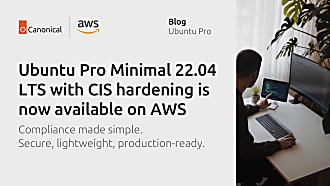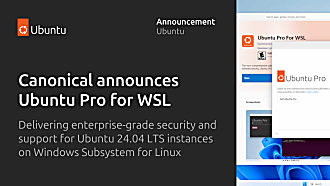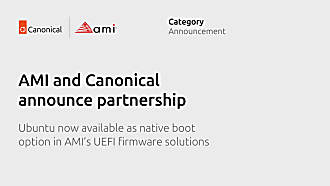Eric Jensen
on 16 April 2019
Industrial & Embedded Linux: Looking Ahead
I recently returned from an extended visit to Germany, where my colleagues and I kept busy attending conferences, visiting customers and partners. We travelled around the country, talking to many, many people at dozens of companies about embedded Linux. We confirmed existing trend data, and gained exciting new insights! Now that I’m back, I’ll summarize key takeaways here.
We started off at Hannover Messe, the mother of all trade shows. Billed as ‘The world’s leading trade show for industrial technology,’ the attendees occupy every hotel, hostel and spare bedroom within 100 km of Hannover for the week. The booths themselves are massive; something to behold. I suspect the quickest path through all the halls would take hours of walking. We only scratched the surface, it was a tremendous experience!

If I were to pick a single word to describe the mindset of exhibitors, it would have to be ‘reliability.’ Many booths had live demonstrations of their hardware being continuously sprayed with water, to flex their industrial cred. Of course, reliability is something we understand very well. You don’t get to be the world’s #1 public and private cloud OS without it! Within the first few minutes at Messe, I knew we would find common ground with these folks.

Lower: Some things at Messe aren’t connected.. yet!
As we continued around the conference, talking with many exhibitors showcasing industrial robots, gateways, networking and control equipment, a few common threads emerged. One that emerged early: an OS by itself is not a competitive differentiator. The ‘roll your own’ habit that has dominated embedded Linux for ages no longer makes commercial sense. This is especially true of any mission-critical device with an extended product lifecycle and any type of connectivity.
Although industrial-strength cables and motors aren’t themselves connected (yet), there were no shortage of devices at Messe that were connected today or soon will be. These devices all have similar OS requirements; low-cost long-term support, regular security updates, and a frequency for the latter is flexible and can easily be tailored to specific product or customer needs.
Each time we explained the benefits of Ubuntu; our pedigree in the cloud, and the services we offer, including support, long-term maintenance and hardware certification. There was often a sense of strong alignment with the needs & wants being described to us, which was both gratifying and exciting! Lastly, some of the more forward-thinking companies were already planning for their futures managing containers and packages, they were pretty excited to hear about snapcraft.io.
It was also heartening to see a strong cloud presence at Messe, including the Big 3 and others. We spent some time at the Amazon booth, learning about their plans to help enable Industry 4.0. We also talked about the AWS Greengrass snap that dropped that same week, and did some brainstorming on how we can work together to empower the industrial world using Ubuntu and Greengrass.
After Messe, we embarked on a whirlwind tour of customers and partners. By and large, these meetings were fun and productive, as we mapped out our joint plans to support their future products and solutions. Later we stopped by another conference, just as small as Messe was large. This one was focused on startups with cutting edge tech for autonomous driving, I had great conversations with some promising young companies. They were developing using Ubuntu, of course, because everyone does (their words). When I told them about our push into embedded Linux, and our plans to go further and offer full lifecycle solutions, there was a lot of enthusiasm. Only served to further reinforce what we heard at Messe: People are ready for a change!
I’ll close by highlighting something we already knew, but maybe you didn’t: Ubuntu is by far the #1 choice for prototyping, research, development and generally just building amazingly cool stuff. This is no secret, but it bears repeating here. It’s a big part of the reason we decided to make embedded Linux a major focus going forward; the obvious need for a distro with a strong pedigree and a solid organization behind it. We aim to intersect all the companies who have chosen to invest in Ubuntu for next-gen R&D, as they take these products into production. The future is on the horizon, see you there!



